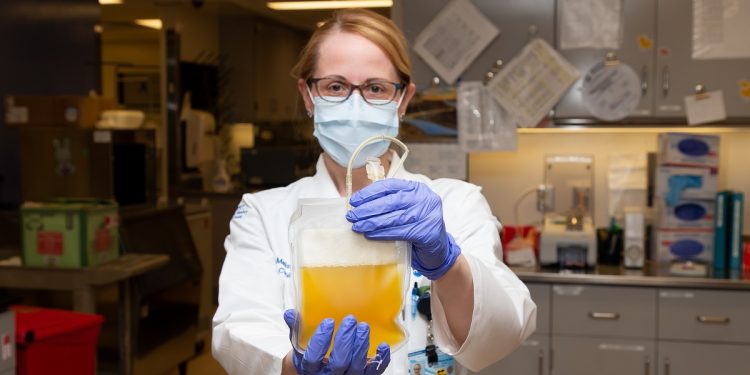January is Blood Donor Month, an annual reminder of how crucial it is for healthy Americans to donate blood, platelets and plasma to help save lives.
This year, the focus isn’t simply on recruiting new donors but ones from a specific demographic.
Millennials and those eligible from Generation Z, blood banks need you.
“We have a desperate, desperate need for young, healthy donors. Many blood donors are retirees, and we lose more and more of them each year due to their own health conditions,” said Dr. Melissa George, medical director of transfusion medicine at Penn State Health Milton S. Hershey Medical Center. “We need to get the younger generations to be committed.”
In Pennsylvania, anyone 17 or older can donate blood, and 16-year-olds can give with permission from a parent or guardian. Donors aren’t precluded by an age ceiling, so long as they meet health requirements.
Blood banks have made changes to make it more convenient for younger adults to donate, from adding more flexible times to the creation of scheduling apps to the use of text reminders. But getting 17-to-35-year-olds to make giving blood a part of their routines can be challenging.
“I think when you’re older, you’ve had enough friends and family members go through different disease processes that you realize, ‘Oh, yes, my loved one needed blood, so I’m going to donate to try to help people like my loved one,’” George said. “I think when you’re younger, you feel invincible, and maybe you haven’t had as many friends or loved ones going through cancer or accidents. That same connection isn’t quite there like, ‘If I donate, this helps my friends, my neighbors and my family.’”
ALWAYS A NEED
According to the American Red Cross, about 6.8 million people in the U.S. donate blood annually, and 13.6 million units of whole blood and red blood cells are collected each year. Still, the need for donors and for blood transfusions never dissipates. One victim of a car accident, for instance, could use up to 100 units of blood.
The Red Cross estimates that every two seconds someone in the country needs blood or platelets and that every day 29,000 units of red blood cells, 5,000 units of platelets and 6,500 units of plasma are used.
MISCONCEPTIONS
Despite the need, there are plenty of reasons why adults of all ages don’t routinely donate blood. Many are simply misconceptions.
Perhaps the most common one is intertwined: A concern about pain/the fear of needles. George said the process – and potential discomfort – of giving blood is similar to having blood drawn for a laboratory test, except it lasts longer because more blood is collected. The extent of the pain is normally a quick pinprick.
Some potential donors are also afraid they may pass out during the process, but George said that’s uncommon. So long as the volunteer is well-hydrated and has eaten before donating, the risk of fainting remains low. Additionally, if donors have that reaction once, it doesn’t mean they’ll encounter it again in the future, George said.
The health of donors and recipients is paramount for blood donation centers and therefore myriad precautions are in place to ensure safety. That includes an extensive health questionnaire that must be filled out prior to the donation and is reviewed by blood-center workers.
If potential donors exhibit certain health symptoms or possess specific health-history risks, they may be turned away temporarily or permanently. The goal, George said, is to make sure both the recipient and the donor are protected in the process.
Overall, blood donation takes roughly 45 minutes – longer for those undergoing apheresis, which is blood plasma donation – but George suggests donors allow about an hour for each appointment. That includes time to fill out the questionnaire, the drawing of the blood and recuperation, such as downing a cup of orange juice afterward.
PUT IT ON THE CALENDAR
In her experience, George said she knows people who turn the act of blood donation into a date. They get together every eight weeks to donate blood and then go out afterwards to grab lunch and catch up. She’s met people who have set up their donation appointments ahead of their Weight Watchers weigh-ins, dropping as much as a pound in a healthy and helpful way.
The specific motivation may vary, but the impact is the same. Whether they are Baby Boomers, Millennials or come from Generation X or Z, blood donors are a community of helpers, providing an essential service for those in need.
“There’s a personal satisfaction that comes with it,” George said. “Someday your friends, your family members will need blood. Or you yourself will. So, if you are able to give blood, it really helps the community at large.”
RELATED CONTENT:
- The Medical Minute: Giving back through blood donation
- The Medical Minute: Donated blood is kept free from pathogens
The Medical Minute is a weekly health news feature produced by Penn State Health. Articles feature the expertise of faculty, physicians and staff, and are designed to offer timely, relevant health information of interest to a broad audience.




